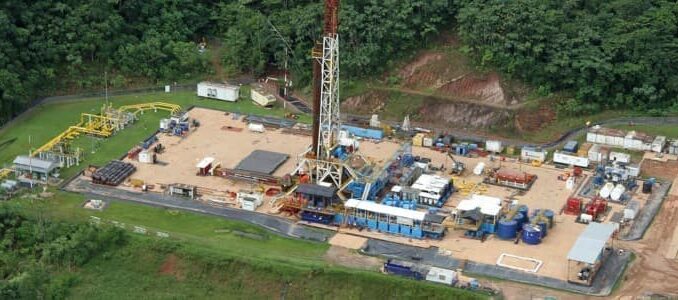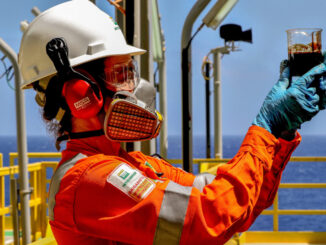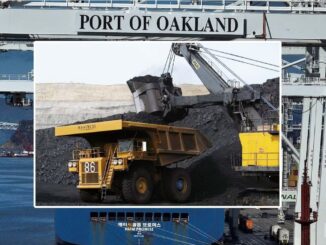
In a bold move to revitalize its energy sector amid global shifts toward sustainable resources, Peru is forging strategic partnerships with U.S. oil giant Chevron and Saudi Arabia. These alliances aim to unlock vast offshore oil potential and develop critical minerals like lithium, positioning the Andean nation as a key player in both traditional hydrocarbons and the green energy transition. As of October 2025, Peru’s government is optimistic about these deals, which could dramatically boost production and economic output in a country where energy and mining already form a backbone of the economy.
Peru’s Energy Mix: A Blend of Hydro, Gas, and Renewables
Peru’s energy landscape reflects its rich natural resources, with a heavy reliance on hydropower for electricity generation and natural gas for broader energy needs. According to recent data, the country’s electricity mix in 2024/2025 is predominantly low-carbon, with 63% coming from clean sources.
Got Questions on investing in oil and gas? Or do you have a Tax Burden in 2025?
Hydropower dominates at 53%, followed by fossil fuels at 37%, wind at 6.6%, and solar at 2.6%. This aligns with Peru’s National Energy Plan 2014-2025, which targeted 60% renewables in the electricity mix by 2025—a goal the country is on track to meet or exceed, with hydropower and other renewables currently at around 52%.
Looking at the total primary energy supply, oil products account for 42.1%, natural gas for 32.6%, hydropower for 9%, and solar, wind, and other renewables for a combined 1.2%, with coal at a minimal 2.4%.
This mix underscores Peru’s dependence on imported oil while leveraging domestic gas from fields like Camisea. Ambitious renewable projects are underway, including over 6 GW of new capacity by 2025 from companies like Enel, Iberdrola, and TotalEnergies, focusing on solar and wind to diversify away from fossil fuels.
Peru’s energy transition is projected to cost $67 billion by 2050, emphasizing grid upgrades, storage, and clean transport.
Oil and Gas Production: Declining but Poised for Revival
Peru’s hydrocarbons sector has faced challenges, with oil production trending downward in recent years. In September 2025, crude output averaged just 42,382 barrels per day (b/d), the lowest monthly level of the year and a drop from August’s 43,765 b/d.
Historically, production peaked at around 196,000 b/d in 1982 but has averaged closer to 53,000 b/d in recent decades, hampered by aging fields and limited exploration.
Natural gas production fares better, supported by the Camisea project, but reserves need bolstering. Perupetro, the state hydrocarbons agency, recently announced strategies to ramp up exploration, aiming for $5-7 billion in investments over the next decade to reverse declines.
China’s CNPC plans to start gas production in Block 58 by late 2026 with a $500 million investment, potentially adding significant volumes.
Companies like PetroTal, operating in the Loreto region, reported Q2 2025 production of 21,039 b/d and forecast 21,000-23,000 b/d for the full year.
Overall, Peru’s strategy focuses on attracting foreign capital to tap offshore and untapped reserves.
Critical Mineral Production: A Global Powerhouse
Peru is a mining juggernaut, particularly in critical minerals essential for the energy transition. As the world’s second-largest copper producer, it aims to partner with Chile to supply 51% of global copper within 15 years through the “Project 51” alliance.
Other key outputs include zinc, silver, indium, and graphite, all vital for batteries, electronics, and renewables.
In 2025, Peru’s mining portfolio features 134 projects worth $6 billion, with copper comprising 73% of investments, followed by gold (13%) and iron ore (9%).
The total mining investment pipeline through 2029 is valued at $54 billion, spanning 51 projects across 19 regions.
Lithium development is emerging, with potential in southern regions like Puno. Copper production is expected to plateau through 2025 but could surge with new pits and expansions, such as those containing 643 million tons of resources at 0.6% grade.
Mining investments reached $1.845 billion in the first five months of 2025, up 4.7% year-over-year.
Economic Impact: Energy and Minerals Drive GDP and Exports
The energy and mining sectors are pivotal to Peru’s economy, contributing significantly to GDP and exports. Mining alone accounted for 17,279 PEN million in Q2 2025 GDP, down slightly from Q1’s 17,366 PEN million.
Overall, these industries represent up to 12% of national GDP, bolstered by $52 billion in expected mining investments.
Exports of minerals and energy products dominate, often comprising over 60% of total exports, with copper alone generating billions annually.Peru’s GDP growth is projected at 2.8-2.9% for 2025, supported by mining revenues and private investment.
Fiscal deficits are expected to narrow to 2.4% of GDP, aided by higher terms of trade from mineral prices.
However, political uncertainties and global commodity fluctuations pose risks.
New Agreements: Chevron’s Offshore Push and Saudi Lithium Ties
The cornerstone of Peru’s energy revival lies in recent and upcoming deals. In September 2025, President Dina Boluarte signed a contract allowing Chevron and Westlawn to join Occidental Petroleum in exploring three offshore blocks (Z-61, Z-62, Z-63) in the Trujillo Basin off northern Peru.
This consortium, which also includes Anadarko, could unlock reserves producing 250,000-300,000 b/d or more, a game-changer for Peru’s oil output.
Exploration is set to begin early 2026, marking Chevron’s entry into Peru and signaling renewed investor confidence.On the minerals front, Peru anticipates signing a memorandum of understanding (MoU) with Saudi Arabia in November 2025 to develop lithium projects and other strategic minerals.
Energy and Mines Minister Jorge Luis Montero highlighted Saudi interest in copper and lithium, part of a broader push to attract Middle Eastern capital.
These partnerships align with Peru’s goal of energy independence and green tech leadership, potentially including infrastructure ties with Ecuador.
Outlook: A Supercharged Future?
By betting on Chevron’s expertise in hydrocarbons and Saudi Arabia’s investment muscle in minerals, Peru is charting a path to energy security and economic growth. Success could elevate oil production, expand critical mineral exports, and accelerate the renewable shift, all while contributing to global decarbonization.
Challenges remain, including environmental concerns and community approvals, but with $67 billion earmarked for the energy transition and robust international alliances, Peru’s future looks brighter—and more electrified—than ever. This will be interesting to see how the Trump Adminstration handles China in South America.
Got Questions on investing in oil and gas? Or do you have a Tax Burden in 2025?
Crude Oil, LNG, Jet Fuel price quote
ENB Top News
ENB
Energy Dashboard
ENB Podcast
ENB Substack







